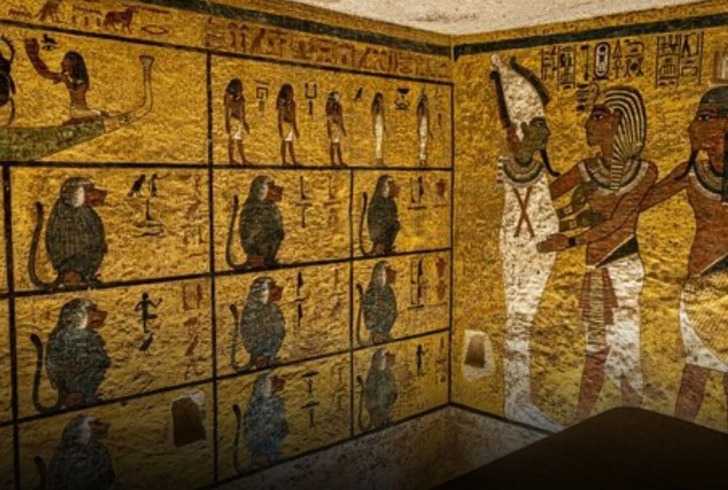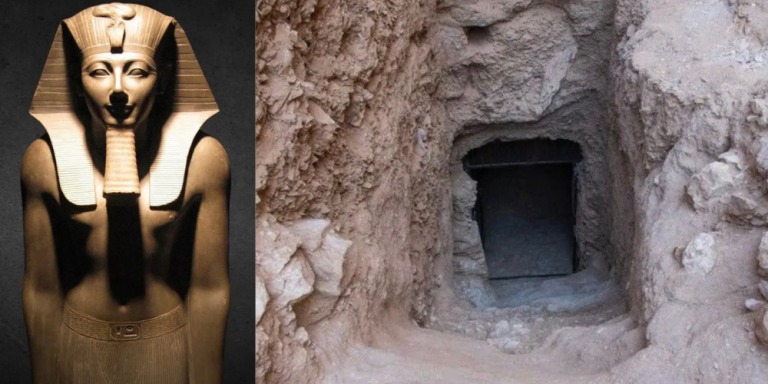Egyptian archaeologists have uncovered the long-lost tomb of Pharaoh Thutmose II, solving a mystery that has puzzled historians for centuries. The Egyptian antiquities ministry announced the discovery, calling it one of the most significant findings in recent history.
The tomb, located west of the Valley of the Kings, sheds new light on a king who ruled during one of ancient Egypt’s most prosperous eras.
A Pharaoh’s Missing Tomb Finally Discovered

Thutmose II, a ruler of the 18th dynasty in the 15th century B.C., was the husband of Queen Hatshepsut, one of Egypt’s most powerful pharaohs. Despite his significance, his tomb had remained undiscovered, leaving historians with a gap in their understanding of his reign. His mummy, found in the 19th century among a collection of royal remains, provided some insights. However, the location of his burial site remained unknown—until now.
A team of British and Egyptian archaeologists first uncovered the tomb’s entrance in 2022. Initially, they believed it belonged to a royal wife. However, after further excavation, they identified it as the burial site of Thutmose II. The discovery is particularly intriguing because the area was previously associated only with royal women.
A Landmark Archaeological Achievement
Artifacts found within the tomb, including fragments of alabaster jars and funerary furniture, provide critical clues about the burial. Archaeologist Piers Litherland, the mission’s field director, explained that the team spent months clearing debris to reach the main chamber. He described the moment as “emotionally turbulent,” as the team had not expected such a groundbreaking find.
A Tomb Built Beneath a Waterfall

The tomb’s location and condition offer more fascinating insights. Built under a waterfall, it suffered significant flooding shortly after the king’s burial. To protect his remains, ancient Egyptians moved them to a secondary tomb, which experts now believe remains intact. Litherland explained that the discovery of broken alabaster jar fragments helped confirm the tomb’s ownership.
“Thankfully, they broke one or two things,” Litherland noted, “because that’s how we identified whose tomb it was.” The inscriptions on these fragments led to the conclusion that the burial site belonged to Thutmose II.
What Comes Next for Archaeologists?
Egyptian officials hope this discovery will renew global interest in Egypt’s rich history and boost tourism. The country has long relied on its ancient sites to attract visitors, and new findings continue to capture the world’s imagination.
This remarkable discovery not only fills a historical gap but also offers a glimpse into the grand burial traditions of ancient Egypt. As excavation continues, researchers anticipate even more revelations that will deepen our understanding of one of history’s most fascinating civilizations.
General Disclaimer: The information provided in this blog is for informational purposes only. Newlo Pedia makes no warranties regarding the accuracy or completeness of the content. Readers are advised to verify details independently before making decisions based on the information provided.
Content Disclaimer:This blog is intended to share general knowledge and insights. It is not meant to replace professional advice or guidance. Newlo Pedia does not endorse or guarantee the accuracy of any information presented here.
Advertising Disclaimer:This blog may include affiliate links or advertising content. Newlo Pedia may earn a commission from purchases made through these links, which helps support the platform. However, all opinions expressed are independent and based on our editorial standards.
Affiliate Disclosure:Some links in this blog may direct you to external websites, and Newlo Pedia may receive a commission for purchases made through these links. This does not influence the integrity or neutrality of the content provided.
Third-Party Links Disclaimer: This blog may contain links to third-party websites. Newlo Pedia does not assume responsibility for the accuracy, content, or policies of external websites. Readers are encouraged to review the terms and privacy policies of linked sites.
Legal Disclaimer: Newlo Pedia does not guarantee the safety, reliability, or quality of any products, services, or recommendations mentioned in this blog. Use any information or purchase products at your own discretion and risk.
Stock Image Disclaimer: Images featured in this blog are for illustrative purposes only. They may not reflect actual locations, products, or scenarios discussed in the content. These images are intended solely to enhance the reader’s experience.
Results Disclosure: The experiences or suggestions mentioned in this blog may vary from person to person. Outcomes are not guaranteed and depend on various factors, including individual preferences and circumstances.
Copyright Disclaimer: This content is the property of Newlo Pedia and is intended for personal use only. Redistribution or unauthorized use of this blog’s content is strictly prohibited.






